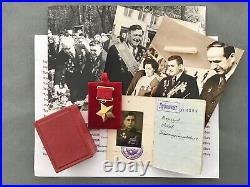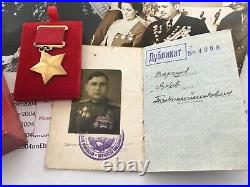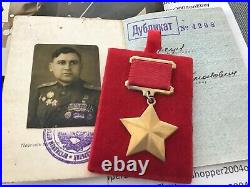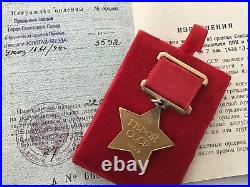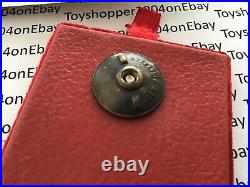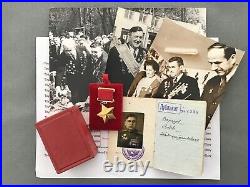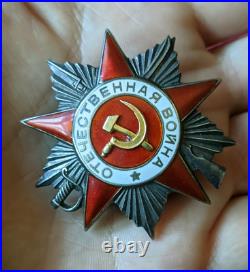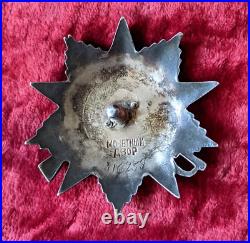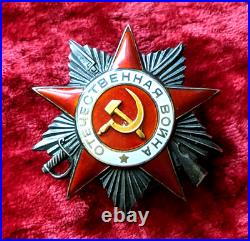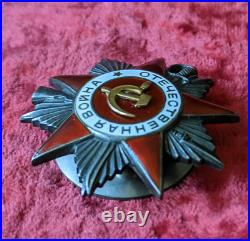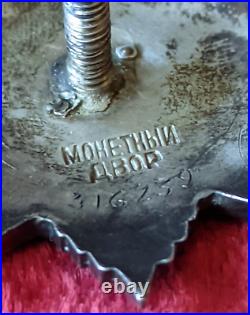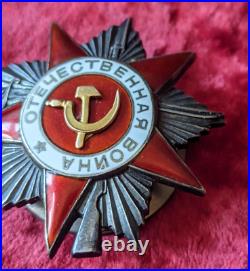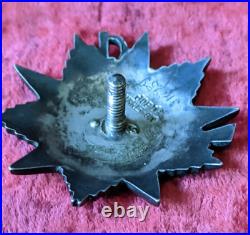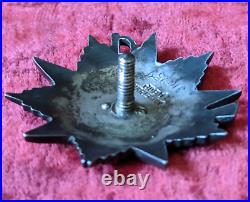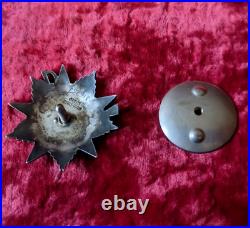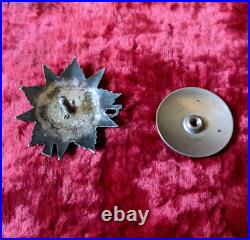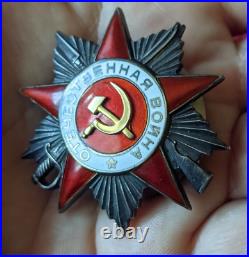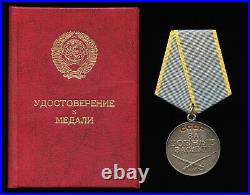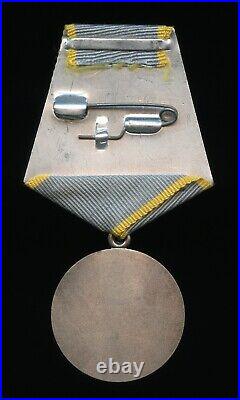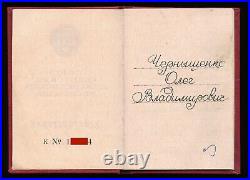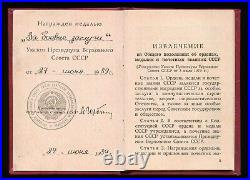Posts tagged combat
Original rare WW II German submarine combat badge. Medal in fine old condition/ rare German WW II Navy badge for fights in. Back of medal the stamp from Juncker Berlin a old company! Only some medals on the collector market in this quality! You are welcome to receive further information on request. We have a rare 1939 knight cross magnetic and iron cross second class in stock too. Additional photos in this discription for more information, please have a look! An exceptionally fine example for a fine collection. The award is wonderful for a private history collection! The badge has signs of wear and is in good condition. The medal came from a very old collection and is rare. We took good photos for you. Please ask us beforehand whether we can deliver to your country without problems. We can send to the USA with UPS. ? If you have any questions, please send us a message.
Order of the Red Star and Combat Service Medal. The awards themselves are original and authentic; however the serial number of the Red Star has been altered, and the Combat Service Medal was originally an unnumbered piece that has had an illegitimate serial number added. Excellent pieces for display, especially on a uniform! Condition is as seen in the images! There is also a small enamel chip on the Red Star that is not easily visible in the scan. Images of the reverse available upon request. All questions in advance. I will answer all coherent, respectful inquiries to the best of my ability. Please see my other listings. Lots of excellent Soviet medals! Many additional high quality pieces available that are not yet listed.
1 x Original WW2 Soviet / USSR Medal for Combat Bravery / Courage with serial number. Based on serial number reference it appears to have been issued towards the 2nd half of 1944. 1 x Original WW2 Soviet / USSR Medal for Combat Merit / Service with serial number. Based on serial number reference it appears to have been issued towards the 1st half of 1943. As seen in pictures. Note: Please note the condition of each medal. They appear to have been well worn during the war and show wear and tear. Ribbons are damaged / well-worn as can be seen in pictures. If only they could tell their story.. Item comes from a smoke and pet free home.
1 x DUPLICATE WW2 Soviet / USSR Hero of the Soviet Union Gold Star Medal for Combat Bravery with Serial number and in case. Please note that this is a DUPLICATE medal meaning it was an official replacement (copy) award for the original issue medal due to awardee’s loss of it or other such circumstances. It is marked with a Cyrillic “A” indicating that it is a DUPLICATE. 1 x Soviet Soldier Service Book with picture of Hero awardee and matching medal serial number. 3 x Personal Soviet Propaganda? Photo of the highly decorated Hero of the Soviet Union with other veterans including one with a female Gold Star recipient. As seen in pictures. Thanks for your understanding. Item comes from a smoke and pet free home.
Soviet Russian USSR Cold War documented medal group consisting of a Medal for Combat Service (or Medal for Combat Merit) with document awarded 27 June 1989 to KGB Border Guard Oleg Vladimirovich Chernyshenko for actions during the Soviet War in Afghanistan! As a rule, direct archival research for awards of this nature (KGB/Border Guards) is not possible. The attribution on hand (“border guard” “Soviet-Afghan War”) was provided by experienced researchers who have had opportunities to examine relevant archival documents in the past. The authenticity of this image is highly dubious to say the least. It is therefore not included in the listing images and should not be considered part of the lot. Condition is excellent , as seen in the images! Some markings to booklet pages. All questions in advance. I will answer all coherent, respectful inquiries to the best of my ability. Please see my other listings. Lots of excellent Soviet medals! Many additional high quality pieces available that are not yet listed.














































































